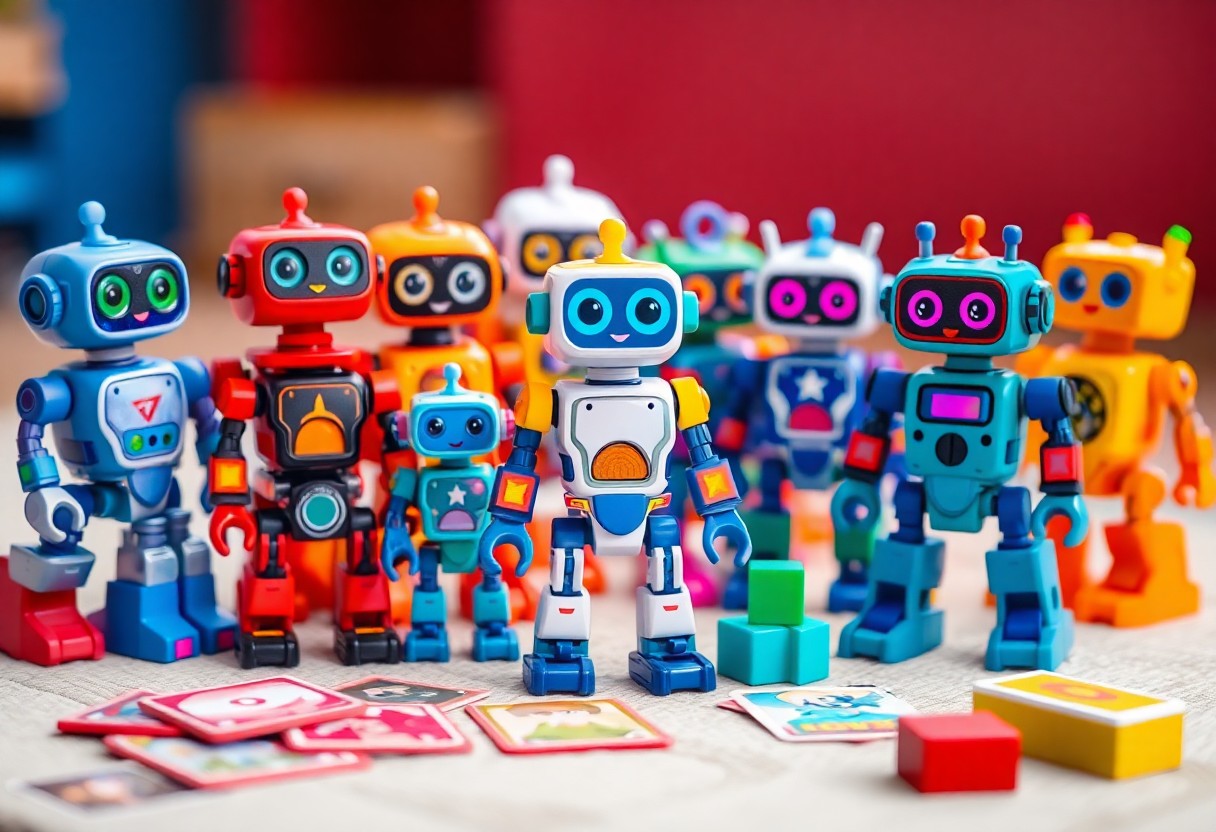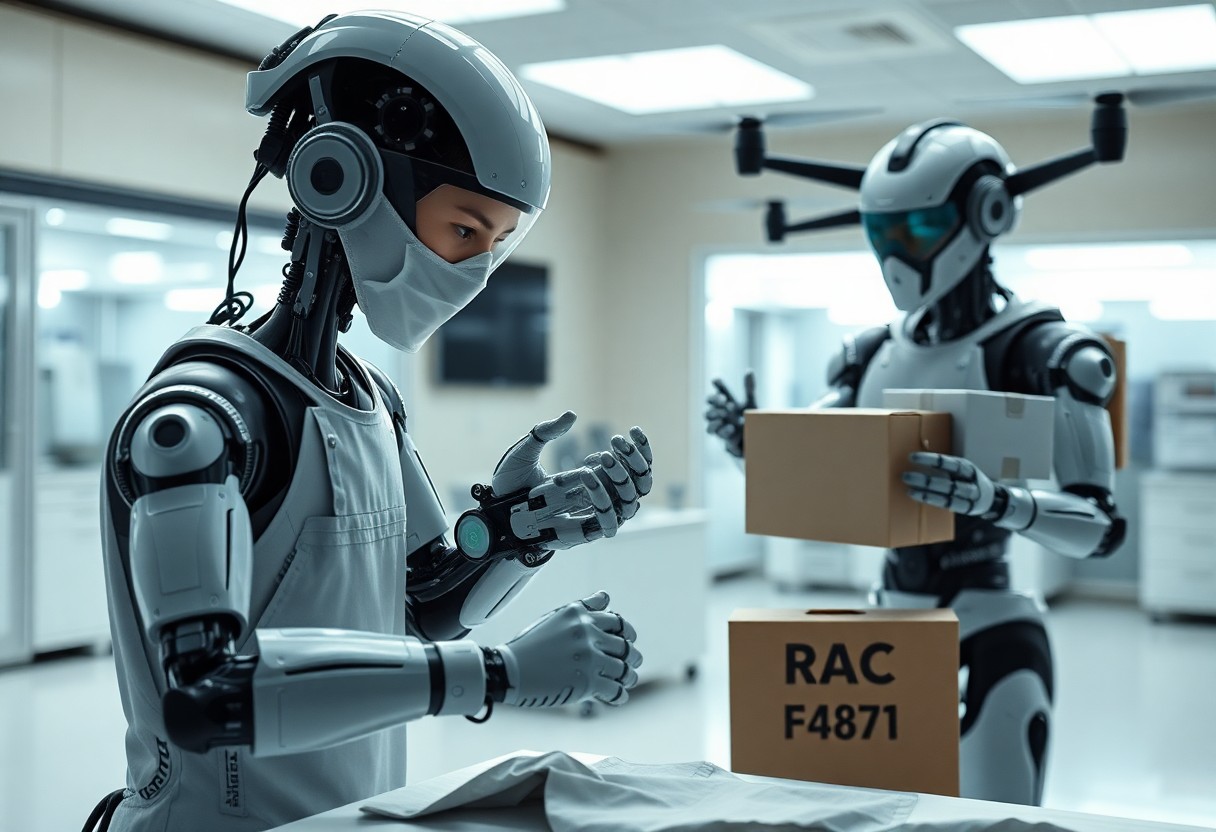Performance in everyday tasks often sparks debate between you and technology. You might wonder whether robots or humans take the crown when it comes to handling those mundane chores that can occupy your day. As we explore the strengths and weaknesses of both, you’ll discover what makes robots excel in precision and efficiency while humans bring adaptability and creativity to the table. Join us in examining how these two contenders stack up against each other and decide which truly reigns supreme in routine tasks.
Understanding Mundane Tasks
Before diving deeper into the world of mundane tasks, it’s important to grasp what they truly entail. Mundane tasks are the everyday, repetitive activities that many of us perform but often overlook. By recognizing these tasks for what they are, you can better appreciate the role they play in your daily life and how they can affect your overall productivity.
What Are Mundane Tasks?
For many, mundane tasks include activities like filing paperwork, answering emails, or even grocery shopping. These chores may seem trivial, yet they consume your time and energy, shaping your daily routine without you even noticing.
The Importance of Efficiency
By mastering efficiency in completing mundane tasks, you can free up valuable time for activities that truly matter to you. When you streamline these repetitive actions, you enhance your productivity and can focus on more meaningful projects or personal interests.
Understanding the significance of efficiency helps you realize that it’s not just about getting things done quicker; it’s about creating more space in your life for what you love. Efficiently managing mundane tasks allows you to maintain a sense of control and balance in your daily routine, ultimately leading to a more fulfilling life. The better you navigate these tasks, the more room you’ll have for creativity, relaxation, and joy.
Robots in Action
It’s fascinating to see robots in action, efficiently completing tasks that once consumed your valuable time. From industrial assembly lines to household chores, robots are designed to enhance productivity. Curious about the limits of robotics? You can find insights into what tasks humans can do better than robots, showcasing the fascinating balance between human skills and robotic efficiency.
Automation and Robotics
After the advent of automation and robotics, routine tasks have become significantly streamlined. These innovations allow you to free up time, enabling you to focus on more creative and strategic pursuits. As robots take over repetitive work, you can enhance your productivity and enjoy a more satisfying work-life balance.
Advantages of Robotic Assistance
Automation in your daily tasks can lead to decreased costs and increased efficiency. With robots taking on the mundane jobs, you can shift your focus to more engaging activities that require human creativity and emotional intelligence. This not only improves productivity but also enhances the overall quality of your work environment.
Assistance from robots comes with various benefits. They can work tirelessly without breaks, ensuring consistency and quality in repetitive tasks. Additionally, robotic assistance can help reduce errors associated with human fatigue or oversight, allowing you to achieve higher standards in your work. This blend of reliability and efficiency from robots can transform your everyday activities, ultimately making life easier and more enjoyable.
Humans at Work
Even in a world increasingly dominated by technology, you’ll find that human workers bring unique qualities to mundane tasks. Your creativity, emotional intelligence, and problem-solving skills often shine through in ways that machines simply can’t replicate. While robots may excel in speed and precision, it’s your ability to adapt to changing situations that keeps the workplace dynamic and engaging.
The Human Touch in Tasks
Before you think about the efficiency of robots, consider the warmth and empathy that only humans can provide. You can connect with customers and colleagues on a personal level, creating a sense of trust and collaboration that machines lack. This human touch not only makes work more enjoyable, but it also fosters long-lasting relationships.
The Value of Flexibility
After assessing capabilities, it’s clear that your flexibility in tasks is one area where humans excel. You have the ability to pivot quickly when unexpected challenges arise, allowing you to meet varying demands with ease.
Value lies in your capacity to adapt to different scenarios and demands. Unlike robots, which function within set parameters and instructions, you can think outside the box and approach problems with creativity and intuition. This adaptability enables you to prioritize effectively and switch between tasks as required, making you a vital asset in any team. Whether it’s handling a complex customer inquiry or adjusting to last-minute project changes, your flexibility enhances overall productivity and team morale.
Comparing Performance
Your choice between robots and humans for mundane tasks often boils down to performance metrics. Each has its strengths and weaknesses, making it crucial to evaluate their abilities in specific contexts. The following table highlights key performance indicators to consider when comparing them.
| Aspect | Robots | Humans |
|---|---|---|
| Speed | Generally faster in repetitive tasks | Slower but efficient in complex tasks |
| Accuracy | High level of precision | Variable, depends on the task |
Speed and Accuracy
Besides efficiency, robots excel in speed and accuracy when performing repetitive tasks. They can complete operations at a pace that humans often find challenging, especially for long hours. While humans may have an advantage in nuanced situations, robots consistently maintain high precision, making them ideal for tasks requiring meticulousness.
Adaptability and Problem Solving
After speed and accuracy, the focus shifts to adaptability and problem-solving abilities. Humans shine in this area, as they can assess new challenges, think critically, and adjust their approaches accordingly. Robots, while programmed for specific tasks, struggle in dynamic environments where flexibility is key.
Even though robots are improving with advancements in AI, they are still limited by their programming and learning algorithms. In unpredictable scenarios, such as dealing with a malfunctioning machine or a unique customer service request, your ability to think creatively and resolve issues on the spot can be a game-changer. This adaptability is a fundamental reason why many roles still rely on human intervention, especially when navigating complex tasks that require quick thinking and personal judgment.
The Role of Technology
Many aspects of our daily lives are influenced by technology, especially when it comes to mundane tasks. From household chores to data entry, advancements in robotics and automation tools have shifted how these tasks are performed. You may find that technology not only enhances efficiency but also frees up your time for more engaging activities. As robots become more integrated into our routines, they redefine what it means to manage everyday responsibilities.
Evolution of Robotics
By tracing the history of robotics, you can see how these machines have transformed from simple mechanical devices to sophisticated systems that support various industries. Early robots were primarily focused on repetitive tasks, while modern advancements have paved the way for intelligent machines capable of learning and adapting. This evolution reflects growing demands for efficiency and precision, enabling you to rely on robots for handling tasks once solely performed by humans.
Future Trends in Task Automation
Evolution in task automation is moving towards increased integration and collaboration between robots and humans, streamlining workflows in both your personal and professional environments. You can expect robots to become even more intuitive, understanding context and responding to your specific needs. As artificial intelligence continues to develop, task automation is likely to encompass more complex operations, giving you the tools to tackle a wider range of assignments with greater ease and effectiveness.
In fact, the future of task automation holds exciting possibilities for seamless interactions between you and machines. Imagine smart robots that can not only perform menial chores but also anticipate your needs, making your life more organized than ever. As this trend progresses, you could soon enjoy the convenience of having your routine managed by intelligent systems that adapt to your preferences. This means more time for the things you love, as automation takes care of the tasks you’d prefer to avoid.
Humans and Robots: A Partnership?
Unlike the idea of competition, the relationship between humans and robots can be viewed as a partnership where each contributes unique strengths. While robots excel in efficiency and precision, your creativity and emotional intelligence are vital in tasks that require human touch and decision-making. By working together, you can create environments that enhance productivity and satisfaction, making mundane tasks more manageable and enjoyable.
Collaboration in the Workforce
Beside boosting efficiency, collaboration between humans and robots fosters a work environment where creativity thrives. With robots handling repetitive tasks, you can focus on more strategic and innovative projects that require critical thinking and human insight. This synergy leads to an improved overall work experience and encourages growth and development in the workplace.
Balancing Roles and Responsibilities
The balance of roles and responsibilities between you and robots is vital for an effective partnership. While robots can tackle repetitive tasks with consistency, your ability to adapt and empathize in complex situations can’t be replaced. Together, you can define clear roles that leverage these strengths, ensuring that both you and the robots are utilized effectively.
But achieving this balance requires open communication and ongoing adaptation. As tasks evolve, it’s vital to reassess how responsibilities are shared between you and the robots. Continuous feedback is vital for optimizing performance—helping you identify areas for improvement and allowing robots to adapt to your workflow. By fostering this relationship, you not only enhance productivity but also create a more engaging and supportive work environment.
To wrap up
Following this exploration of robots versus humans in performing mundane tasks, you can see that while robots excel in speed and precision, your unique creativity and adaptability shine through in more nuanced situations. Each has its strengths, making it important to find the right balance between the two in your daily life. Embracing both technology and your human skills can lead to a more efficient and enjoyable way of handling routine tasks. It’s all about enhancing your experience and making everyday chores a little easier!





